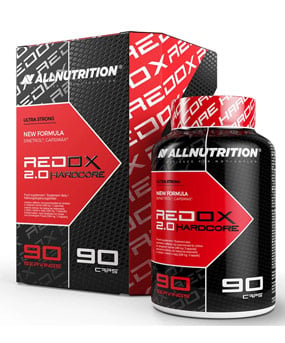O aminokwasach była juz mowa m.in. w tych badaniach:
https://www.sfd.pl/Leucyna__stymuluje_syntezę_białek_i_reguluje_poziom_cukru-t695397.html
https://www.sfd.pl/BCAA_branched_chained_amino_acids__jako_antykatabolik_-t711768.html
https://www.sfd.pl/Synteza_białek_mięsniowych_anabolizm__EAA_vs_NEAA-t721412.html
https://www.sfd.pl/Potreningowa_suplementacja__potreningowe_okno_anaboliczne-t699437.html
Teraz kilka zdań (badań) na temat insuliny.
Co to wogole jest insulina?
To anaboliczny hormon peptydowy o działaniu ogólnoustrojowym, odgrywający zasadniczą rolę przede wszystkim w metabolizmie węglowodanów, lecz także białek i tłuszczów.
Insulina produkowana jest przez komórki B (β) wysp trzustki (Langerhansa). Najważniejszym bodźcem do produkcji insuliny jest poposiłkowe zwiększenie stężenia glukozy we krwi. Dzięki zwiększeniu wytwarzania insuliny i jej wpływowi na komórki efektorowe (miocyty, adipocyty, hepatocyty) zwiększa się transport glukozy do wnętrza komórek, co obniża poziom glukozy we krwi.

......czyli ze jak?
W mega mega skrócie:
Spożywamy posiłek bogaty w węglowodany (choć nie tylko węglowodany powodują wydzielanie insuliny!).
Węglowodany się trawią - do krwi zostaje uwolniona glukoza
Ile?
Zależy jaki zjedlismy posilek.
Im wyższa wartość IG danego produktu, tym wyższy poziom cukru we krwi, po spożyciu tego produktu.
Natomiast spożycie produktu o niskim indeksie glikemicznym powoduje powolny i relatywnie niewielki wzrost poziomu cukru i co za tym idzie - niewielki wyrzut insuliny.
Warto pamiętać, że przetwarzanie produktów żywnościowych (obróbka termiczna, czas obróbki termicznej) podwyższa ich indeks glikemiczny.

Drugim sposobem obliczania wpływu spożywanych węglowodanów, dając większy obraz niż samo IG.
Wartość IG mówi tylko jak szybko określony węglowodan zmieni się w cukier. Nie mówi natomiast jak wiele tego węglowodanu jest w porcji w określonym produkcie. Niezbędne jest znać zatem zarówno IG i ŁG, aby zrozumieć wpływ jedzenia na poziom cukru we krwi.

Aby indeks i ładunek glikemiczny spożywanych produktów nie był duży musimy wziąć pod uwagę następujące aspekty:
-błonnik opóźnia przemianę węglowodanów poprzez częściowe blokowanie dostępu glukozy do krwi. Może również podwyższyć czułość receptorów podatnych na insulinę w mięśniu, tak że glukoza łatwiej przedostaje się do komórki. Jeśli receptory są mało czułe, wtedy trzustka zwiększa wydzielanie insuliny by zrównoważyć dopływ glukozy do komórek mięśni,
-formę produktu - czy jest zmielony lub w inny sposób przetworzony czy występują w nim pełne ziarna lub włókna,
-stopień przygotowania lub ugotowania - co pozwala na zbadanie zawartości skrobi,
-obecność fruktozy i laktozy (obie mają niski indeks glikemiczny),
-czas spożywania pokarmu, czas jedzenia ma wpływ na wydzielanie glukozy do krwi - im szybciej jesz, tym jest ono szybsze,
-produkty bogate w tłuszcze, o niskim indeksie glikemicznym mogą być błędnie zakwalifikowane, bo tłuszcze i białko spowalniają opróżnianie żołądka, a tym samym i szybkość trawienia w jelicie cienkim. A zatem ich indeks glikemiczny może być relatywnie niższy niż produktów zawierających mniej tłuszczów
Co dalej?
Wchłania się glukoza z przewodu pokarmowego dopływa z dorzecza krwi żyły wrotnej do wątroby.
To jest transport niezależny od insuliny - czyli do tej pory jeszcze nie ma insuliny.
Im więcej glukozy tym więcej się dostaje do komórki beta trzustki.
W dalszym ciągu jest to transport niezależny od insuliny.
Następnie glukoza ulega przemianom metabolicznym:
-spalenie glukozy w glikolizie
-powstaje ATP
-to powoduje zamknięcie kanału potasowego
-komórka beta ulega depolaryzacji
-otwarcie kanału wapniowego sterowanego potencjałem
-napływ jonów Ca do cytoplazmy komórki
-> wyrzut insuliny
........tada!
Insulina się wydzieliła, dopływa do komórki posiadającej dla niej receptor, będzie to komórka w której jest transport zależny od insuliny, czyli głównie komórka mięśniowa, mięśnie szkieletowe, oraz adipocyt i tu znajduje się receptor insulinowy, zbudowany z podjednostek zewnętrznych alfa i dwóch podjednostek beta, i tu z podjednostkami wewnętrznymi sprzężona jest kinaza tyrozyno swoista. W efekcie dość skomplikowanego procesu dochodzi do aktywacji szeregu procesów metabolicznych związanych z insuliną, a więc wpływu insuliny na gospodarkę węglowodanową, białkową, lipidową, a jednym z ważnych aspektów pobudzenia tego układu wewnątrzkomórkowego jest przenoszenie się transporterów glukozy z wnętrza komórki do błon.
W komórkach, w których jest transport insulinozależny, pobudzenie receptora insulinowego prowadzi do wytworzenia białek błonowych, które mają wpuścić glukozę do wnętrza komórki i tym białkiem jest GLUT 4. Po wytworzeniu GLUT 4 musi ulec wbudowaniu w błonę i dopiero wtedy potrafi wpuścić glukozę do wnętrza komórki.
Insulina połączyła się z receptorem następuje pobudzenie IRS-u, uruchomienie syntezy GLUT 4, który zostaje wbudowany w błonę, uległ fuzji w błonie i wpuścił nam glukozę.
Spada poziom glukozy we krwi -> spada poziom insuliny -> trzustka przestaje produkować więcej insuliny.
Czyli to jest główne zadanie insuliny.
Jednakże jednym z aspektów wzmożonej aktywności insuliny jest przyrost magazynowanej tkanki tłuszczowej. Insulina zahamowuje rozpad i uwalnianie magazynowanych tłuszczy i stymuluje enzymy pakujące lipidy do komórek tłuszczowych do tworzenia większej ilości tłuszczu
Nasze ciało jest wyposażone w kilka hormonów, które maja za zadanie zwiększyć poziom glukozy we krwi (np.adrenalina,noradrenalina,kortyzol).
Ale mamy tylko 1 hormon, który obniża poziom glukozy - i jest nim insulina.
Bez insuliny poziom cukru po spożyciu dużej ilosci weglowoadnów wzrósłby we krwi do dużej wartości,co byłoby już niebezpieczne dla życia.
Z taką sytuacją mamy do czynienia w cukrzycy młodzieńczej typu I, w której organizm nie wytwarza (bądź prawie nie wytwarza) insuliny i musi być ona w całości dostarczona z zewnątrz.
Aminokwasy(leucyna) mają wpływ na kinazę mTOR, a insulina(węglowodany i/lub aminokwasy) na kinazę PI3 i kinazę białkową B, co przekłada się między innymi na spadek aktywności kinazy aktywowanej przez AMP, która może hamować aktywność mTOR. W ten sposób uzyskujemy synergiczny efekt wywoływany przez dostępność aminokwasów i insuliny. Kinazy fosforylujące białka wiążące eIF4E oraz białko S6 są uaktywniane przez kinazę mTOR, a regulacja inicjacji translacji zachodzi właśnie poprzez fosforylację białek wiążących eIF4E i białka S6. Bez translacji nie będzie syntezy protein.
Węglowodany,NEAA,reszta EAA nie maja potencjału stymulującego syntezę, kiedy są porównane do leucyny.
Aczkolwiek połączenie aminokwasów z węglowodanami wywiera wpływ na kinazę PI3 i aktywność mTOR - co powoduje wywołanie maxymalnej szybkości syntezy nowych białek w okresie regeneracji powysiłkowej.
Leucine Regulates Translation Initiation of Protein Synthesis in Skeletal Muscle after Exercise
http://jn.nutrition.org/content/136/2/533S.full
Ale co nam "KULTURYSTOM" daje ta insulina oprócz tego ze obniża poziom cukru i upycha go (przynajmniej po części) do mięsni?
Czy ma jakiś wpływ na syntezę białek mięśniowych,albo przynajmniej na zahamowanie katabolizmu tych białek?
->Zwiększony poziom insuliny hamuje działanie proteolizy (badania 1) - tj. degradowanie białek do aminokwasów - czyli działa antykatabolicznie!
https://www.sfd.pl/Insulina__a_metabolizm_białek_mięśniowych-t730772.html#post1
->Stymuluje pobór aminokwasów przez mięśnie - czym znacznie zwiększa syntezę białek mięśniowych (badania 2).
https://www.sfd.pl/Insulina__a_metabolizm_białek_mięśniowych-t730772.html#post2
->Niektóre badania sugerują, że insulina nie jest modulatorem, lecz raczej czynnikiem zezwalającym na syntezę
i że poziom we krwi ≈10-15 μ U/mL jest wystarczający na maxymalną syntezą białek mięśniowych (badania 3).
https://www.sfd.pl/Insulina__a_metabolizm_białek_mięśniowych-t730772.html#post3
->Również uważa się, że poposiłkowy wysoki poziom insuliny zwiększa przepływ krwi - tym samym nasila transport aminokwasów do mięsni (badania 4) - co nasila syntezę białek mięśniowych.
https://www.sfd.pl/Insulina__a_metabolizm_białek_mięśniowych-t730772.html#post4
część info pochodzi z:
http://pl.wikipedia.org/wiki/Insulina
https://www.sfd.pl/Glukoza_po_treningu-t333578.html
http://docs4.chomikuj.pl/273646439,0,0,13-----21.02.2001-węglowodany,-pocz-cukrzycy.doc
http://www.odzywianie.info.pl/Indeks-i-ladunek-glikemiczny.html
Zmieniony przez - solaros w dniu 2011-04-26 04:09:07
"Cóż jest trucizną?
Wszystko jest trucizną i nic nie jest trucizną, tylko dawka czyni, że dana substancja nie jest trucizną!".
BLOG: http://www.sfd.pl/t1033576.html





 Krzysztof Piekarz
Krzysztof Piekarz













